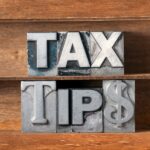The Senate overwhelmingly passed a coronavirus package that would provide small businesses with a tax credit for paid sick leave. Here is a summary of what is available for eligible employers, and how to apply it.
Emergency Paid Sick Leave
Eligibility: Employers with fewer than 500 employees.
Applicability: A covered employer must provide up to 80 hours of Emergency Paid Sick Leave (EPSL) for Coronavirus-related absences, in addition to any current PTO offered. Sick leave may be pro-rated for part-time employees, for the equivalent of two weeks EPSL. Employees must be eligible on their first day of work, and are entitled to use EPSL before any other otherwise-available paid leave the employer provides. Employers may not require exhaustion of employer-provided leave prior to the employee accessing EPSL.
Mandated Amounts: There are two tiers of EPSL. The amounts listed here are the maximum statutory mandate – an employer may always choose to pay more than the statutory requirement.
- Tier 1: For employees directly impacted by coronavirus. Employer must pay 100% of wages (up to $511 per day). This EPSL rate is for employees who are unable to work or telework because the employee (i) is subject to government quarantine or isolation orders, (ii) has been advised by a healthcare provider to self-quarantine, or (iii) has COVID-19 symptoms and is seeking diagnosis.
- Tier 2: For employees who are caregivers. Employer must pay two-thirds of the employee’s regular wages (up to $200 per day) for employees who cannot work or telework because the employee is (i) caring for their child whose school or daycare is closed or unavailable due to COVID-19 precautions, or (ii) absent due to substantially similar conditions. “Substantially similar conditions” will be clarified by the Department of Labor at a later date.
Exemptions: Employers with fewer than 50 employees may be eligible for exemption from the mandated Tier 2 benefits described above if offering that leave causes a financial hardship. Employers of health care providers or emergency responders may elect to exclude those specific employees from using EPSL.
Carryovers: Employees who do not use all of their 2020 EPSL may not carry unused amounts over to 2021. Employers are not required to pay out unused EPSL upon separation from employment.
Notice Requirement: Employers must post a notice regarding the availability of EPSL. The U.S. Department of Labor (DOL) will release an approved-format notice. We expect that the notice must be posted in the same place and in the same manner as other DOL notices.
Paid Public Health Emergency Leave under FMLA
Eligibility: Employers who are subject to existing FMLA law.
Applicability: Covered employers must offer up to 12 weeks of paid Public Health Emergency Leave (Emergency Leave) to employees who have been employed at least 30 calendar days. Employees who work for a covered employer at a site with less than 50 employees are also eligible for Emergency Leave.
Mandated Amounts: Emergency Leave must be paid by the employer after the employee’s first 10 days of absence. The employee may choose to use otherwise-available paid leave concurrent with their first 10 days of leave. Emergency Leave must be paid at two-thirds of the employee’s regular rate of pay, up to a maximum of $200/day and $10,000 total per employee. An employer may elect to pay more than this statutory maximum.
Exemptions: Employers of healthcare workers and emergency responders can choose to exclude those employees from Emergency Leave. Employers with fewer than 50 employees may be eligible for an exemption due to financial hardship.
Payroll Tax Credits
Credit for Emergency Paid Sick Leave:
- Eligibility: Employers are eligible to receive a refundable credit against FICA or Railroad Retirement Tax Act taxes of up to 100% of wages paid to employees receiving EPSL (as described above).
- Applicability: The maximum credit is $511/day per employee for employees receiving Tier 1 EPSL (see above) and $200/day per employee for employees receiving Tier 2 EPSL.
- An employer can receive a credit for a maximum of 10 days of paid sick leave per employee. In addition, employers are eligible to receive a refundable credit in the amount of the qualified health plan expenses allocable to employee receiving sick leave under the mandatory leave provisions of the Act. These expenses refer to the cost of maintaining group insurance for individuals on sick leave – like health insurance premiums.
Credit for Required Paid FMLA Leave:
- Eligibility: Employers are eligible to receive a refundable credit against FICA or RRTA taxes of up to 100% of wages paid for Public Health Emergency Leave (see above).
- Applicability: The maximum credit is $200 per day per employee, up to $10,000 per employee for the lifetime of the credit. Additionally, employers are eligible for a refundable credit in the amount of qualified health plan expenses allocable to employees on Public Health Emergency Leave. These expenses refer to the cost of maintaining group insurance for individuals on paid family leave – like health insurance premiums.
Self-Employment Tax Credits
Self-Employment Tax Credit As Substitute for Self-Employed Person’s EPSL:
- Eligibility: Self-employed individuals are also eligible for a refundable self-employment tax credit for the EPSL the self-employed person would be entitled to if they were an “employee” of their own business.
- Applicability: This is calculated as the lesser of: (i) $511/day for Tier 1 EPSL (see above) or $200/day for Tier 2 EPSL (see above), or (ii) 67% of the individual’s per-day SE income. The individual’s per-day SE income is the individual’s 2020 SE income divided by 260. The maximum credit available is for 10 days of EPSL.
Self-Employment Tax Credit as Substitute for Self-Employed Person’s Paid Family Leave:
- Eligibility: Self-employed individuals are also eligible for a refundable self-employment tax credit for the paid family leave the self-employed person would be entitled to if they were an employee of their own business.
- Applicability: This is calculated as a maximum of the lesser of: (i) $200 per day, or (ii) 67% of the individual’s per-day SE income. The individual’s per-day SE income is the individual’s 2020 SE income divided by 260. The maximum credit available for the self-employed person’s paid family leave is $10,000.
FICA Tax Break for Employers
Payments of Mandatory Sick Leave and Mandatory Paid Family Leave:
- Applicability: Amounts paid under this Act by an individual’s employer for mandatory sick leave or family leave under the act are exempt from the employer’s share of FICA.
K·Coe will continue to monitor official announcements and provide guidance surrounding any future changes as local, state, and government mandates change. Contact a K·Coe tax advisor with questions or issues.
For the action items, guidelines, and resources you need right now, visit the K·Coe COVID-19 Resources and Updates web page.











